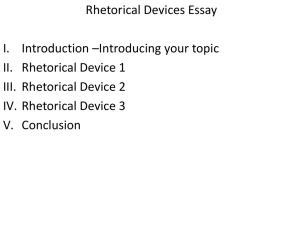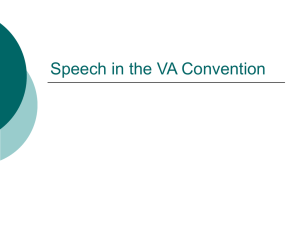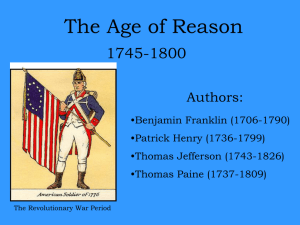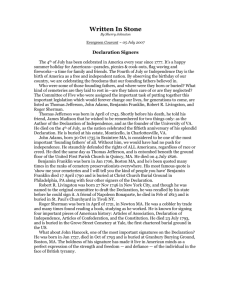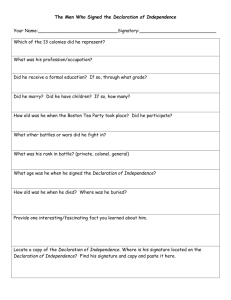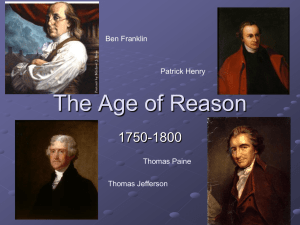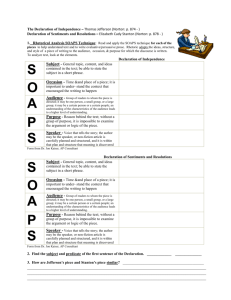Lesson Plans for Week of March 9 Juniors
advertisement
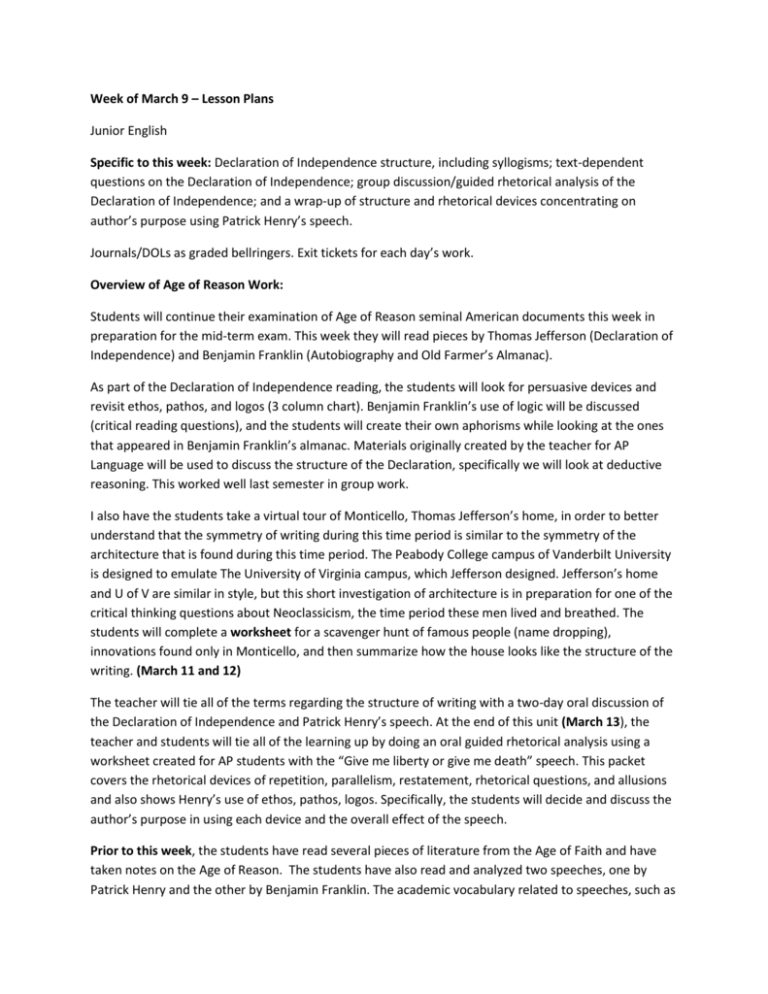
Week of March 9 – Lesson Plans Junior English Specific to this week: Declaration of Independence structure, including syllogisms; text-dependent questions on the Declaration of Independence; group discussion/guided rhetorical analysis of the Declaration of Independence; and a wrap-up of structure and rhetorical devices concentrating on author’s purpose using Patrick Henry’s speech. Journals/DOLs as graded bellringers. Exit tickets for each day’s work. Overview of Age of Reason Work: Students will continue their examination of Age of Reason seminal American documents this week in preparation for the mid-term exam. This week they will read pieces by Thomas Jefferson (Declaration of Independence) and Benjamin Franklin (Autobiography and Old Farmer’s Almanac). As part of the Declaration of Independence reading, the students will look for persuasive devices and revisit ethos, pathos, and logos (3 column chart). Benjamin Franklin’s use of logic will be discussed (critical reading questions), and the students will create their own aphorisms while looking at the ones that appeared in Benjamin Franklin’s almanac. Materials originally created by the teacher for AP Language will be used to discuss the structure of the Declaration, specifically we will look at deductive reasoning. This worked well last semester in group work. I also have the students take a virtual tour of Monticello, Thomas Jefferson’s home, in order to better understand that the symmetry of writing during this time period is similar to the symmetry of the architecture that is found during this time period. The Peabody College campus of Vanderbilt University is designed to emulate The University of Virginia campus, which Jefferson designed. Jefferson’s home and U of V are similar in style, but this short investigation of architecture is in preparation for one of the critical thinking questions about Neoclassicism, the time period these men lived and breathed. The students will complete a worksheet for a scavenger hunt of famous people (name dropping), innovations found only in Monticello, and then summarize how the house looks like the structure of the writing. (March 11 and 12) The teacher will tie all of the terms regarding the structure of writing with a two-day oral discussion of the Declaration of Independence and Patrick Henry’s speech. At the end of this unit (March 13), the teacher and students will tie all of the learning up by doing an oral guided rhetorical analysis using a worksheet created for AP students with the “Give me liberty or give me death” speech. This packet covers the rhetorical devices of repetition, parallelism, restatement, rhetorical questions, and allusions and also shows Henry’s use of ethos, pathos, logos. Specifically, the students will decide and discuss the author’s purpose in using each device and the overall effect of the speech. Prior to this week, the students have read several pieces of literature from the Age of Faith and have taken notes on the Age of Reason. The students have also read and analyzed two speeches, one by Patrick Henry and the other by Benjamin Franklin. The academic vocabulary related to speeches, such as parallelism, repetition, etc. were covered. This vocabulary will be discussed again right before the junior EOC because the terms are also found there. I will also incorporate more discussion of the structure of arguments, allowing the students to see the sample EOC questions about rhetorical analysis as bellringer activities this week. Prior to the mid-term we will revisit how to write an expository essay, using their first test essays as a way of revising and upping the level of writing.The mid-term will be comprehensive, but rather than testing over the pieces of literature we have read, the students will be tested over their ability to use the skills they have learned so far this year, including close reading.
